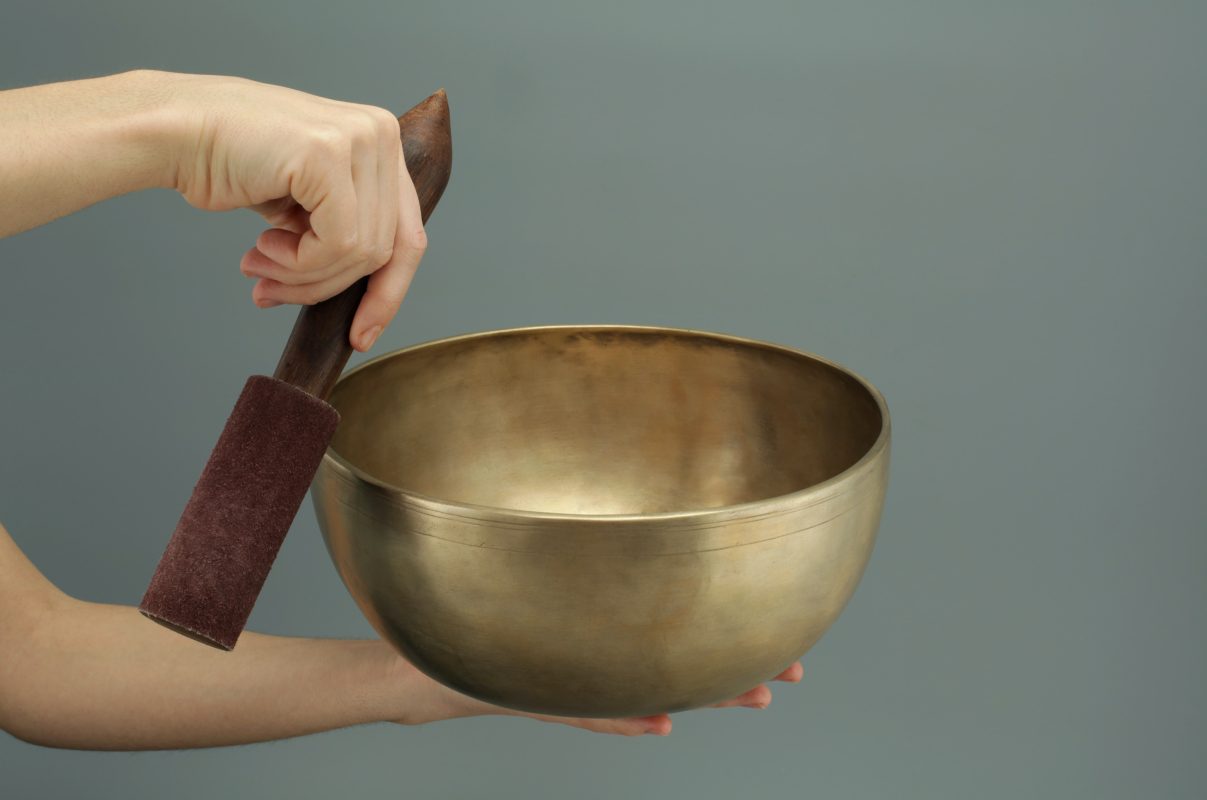Tibetan Singing Bowl
Singing Bowls For Beginners
Singing bowls have been used in sound therapy for over 25000 years all over the world. As people seek more traditional and safer ways to relieve stress, anxiety, and stimulate spiritual healing, singing bowls are becoming more popular day by day. A singing bowl comes with a wooden mallet which when rubbed or stroked against the bowl, produces a deep, rich vibrating sound. This soothing, harmonious sound lingers in the air long after you stop playing the bowl. The sound of singing bowls is believed to have many health benefits and is also used in meditation. Today, many businesses are revolving around singing bowls. Many practitioners and ‘healers’ conduct therapy sessions all over the world.
People all over the world seek comfort and an escape from their problems and anxieties through singing bowl therapy. They have also become popular as souvenirs and gifts when people visit Nepal and other south and east Asian countries. Before you buy a singing bowl for yourself, there are a few things to know about them.
Origin of singing bowls:
Although it is hard to say exactly when a bowl commonly used in kitchens became a tool of meditation and bodily relaxation, its origins can be traced back to Nepal and not Tibet, unlike some popular beliefs. There used to be a lot of trade and exchanges between Nepal and Tibet to boost diplomatic relations. Araniko travelled to Tibet with 80 other Nepali artisans to promote Nepali culture and art. They took with them a lot of knowledge of metals.
A metallic bowl or bata in Nepali was used as a rice bowl or Janai bata. These bowls are made from seven metals: copper, tin, zinc, lead, iron, silver, and gold. It is said that eating from such bowls provides minerals to the body, especially for pregnant women. Many Bhrikuti must have taken one of these to eat healthy during her pregnancy.
Salil Subedi, an author who has written two books on singing bowls and sound therapy, says the verb ‘singing’ wasn’t associated with these bowls until after the 1960s. Through his research, he found that the term ‘singing bowl’ was coined by Jit Bahadur Shahi, a trader of handicrafts.
“He said there was no name for the bata and that he had named it singing bowl because of the beautiful sound it made, and now the name is used everywhere in the world,” said Subedi. The name might have evolved as Tibetan singing bowls when Tibetan refugees started selling them to earn a living.
These bowls are now found all over the world and are popular for meditational purposes and their healing benefits. They are also one of the most sought-after souvenirs for tourists visiting Nepal. One can easily find these bowls in Thamel in Kathmandu or any other popular tourist destination and local art shops.
How singing bowls work:
Singing bowls are traditionally hand-made from seven metals: copper, tin, zinc, lead, iron, silver, and gold. The sound and vibrations made by these bowls depend largely on the size of the bowl and the proportion of their ingredient metals.

The singing bowl usually comes with a stout, wooden stick. When the stick strikes the bowl or rubs around the bowl in circular motions, a deep and rich-toned sound comes from it. The sound and vibrations work as a kind of music therapy for people. There are many theories and studies about why singing bowls are considered therapeutic. All of these usually suggest that:
- The bowls produce vibrations that affect the mind and the body.
- The sound of the bowls creates brain waves that induce deep relaxation in people.
- They may give the same benefits as listening to soothing and meditative music.
Ancient sound therapy uses pulsing sounds, drumming, singing, and clapping for spiritual and health purposes.
Today, many businesses revolve around sound therapy and healing through music in Nepal or Tibet and all over the world. The ‘healers’ believe that the music from the bowls releases pressure from various spiritual focal centres (chakras) in our bodies. It cleanses our souls and relieves stress, anxiety, depression, and insomnia. It also helps regulate the menstrual cycle. The practitioners usually have many students and visitors come to them to get away from their materialistic and busy lives for a day of calm and serenity.
Here’s a quick guide to playing a singing bowl:
Holding The Bowl:
You can hold the bowl at chest level or on your lap. Hold it on your palm or your fingertips as we mentioned above or you can place the bowl on a flat surface like the floor, a table, or a mat. A wooden surface is recommended for clearer sound and to let the vibrations dampen slowly.
However, holding the bowl on your hands or fingertips will let you feel the vibrations and give you a better overall experience of playing the bowl.

Holding the Mallet:
The most comfortable way to hold a mallet is to hold it like a pen or like you would hold a knife while eating. You are supposed to hold the padded side of the mallet and play the bowl with the wooden side. However, you can play the bowl with the padded side too. It is a little bit harder to get used to and get the bowl ringing, but this method will create a kind of deep, bass tone which is equally relaxing and soothing.
How To Play A Singing Bowl:
Playing a singing bowl is very straightforward, but it still requires some practice to play it for healing and meditative purposes. There are two ways you can play a singing bowl. The first is to strike it with a wooden mallet and the second is to rub the mallet in a circular motion around the rim of the bowl.
Here we explain both of these methods in great detail for beginners:
Striking The Bowl
The striking method is simpler and easier to learn and master. It will not take you long to get it right. Begin by sitting in a comfortable position with your spine comfortably elongated. Take deep breaths and stay calm.
- Hold the bowl right-side-up in your non-dominant hand and the wooden mallet in your dominant hand.
- The padded side of the mallet should rest between your fingers and the bare side used to play the bowl.
- Lightly strike the bowl on the rim or the outside body of the bowl.
- This will create a rich and deep sound and vibrations.
- Let the sound and the vibrations linger and fully dissipate before striking again in the same way.
Rimming The Bowl
This method can be more challenging than the striking method. It will take you some practice before you can fully get the hang of it. Sit in a comfortable position with your spine straight and tall. Take deep breaths and begin. Again, hold the padded side and play the bowl with the bare wooden side.
- Hold the bowl right-side-up with your non-dominant hand and the mallet with your dominant hand.
- Hold the mallet in the middle how you would grip a pen; with the mallet lying in between your index finger, thumb, and middle finger.
- You can strike the bowl first and let the sound and the vibration play out fully.
- Then rub the mallet vertically around the exterior wall of the bowl slowly and all the way around. Or do the same on the rim of the bowl. You can choose to circle around the bowl in clockwise or anticlockwise motion, depending upon which is more comfortable for you.
Note: this action is similar to stirring a pot; slow and full circles around the bowl and keep the mallet held vertically.
- The bowl will start making gentle sounds. Keep this going for several rounds around the bowl. Let the soothing sound build up.
- Increase the pressure by holding the mallet firmly against the bowl, but keep the speed gradual.
- As you continue, the overtone will build up and sound sweet and clear. Once you find the right tone, keep the pressure and speed intact. The pressure is necessary to keep the bowl singing and vibrating.
You can keep going to your liking and comfort. Or slowly come to a stop and let the sound and vibrations linger and dampen themselves slowly. Then begin again in the same way. You can omit to strike the bowl before rimming it; although it is easier to make the bowl sing and vibrate if you strike it and start rimming immediately.
You can experiment with going back and forth between striking and rimming once you get used to playing the bowl. There are no set rules on playing the bowl; it depends upon you and what you find easier.
Uses of singing bowls:
- Anxiety Relief: In a study of singing bowls, scientists recorded their sound. They discovered wave patterns that were similar to the alpha waves produced by our brain. This gives us immense relaxation when a singing bowl is played. Our brain loosens up and we are relieved of stress.
- Meditation: The music from singing bowls is meditative and therapeutic. Many healing practitioners help people meditate and become mindful with the assistance of singing bowls. The alpha waves and vibrations help people stay focused and let go of any tension in their bodies.
- Helps with insomnia: Calm music never fails to stir people deeply inside and push them to deep relaxation. Because of their contribution to easing anxiety and depression, singing bowls also help people with insomnia to doze off.
- Lowers blood pressure: In a study conducted and published in the American Journal of Health Promotion in 2014, a 12-minute relaxation session with singing bowls showed a direct impact in lowering blood pressure and heart rate.
- Stimulates the immune system: People believe that singing bowls impact our brain waves and stimulate our immune system directly. They also improve blood circulation and eliminate toxins from our bodies.
- Harmonizing the body: The deep vibrations and tone of the singing bowls may help balance our body’s spiritual energy (chakras) and harmonize the cells. Many people vouch for such spiritual benefits of these singing bowls.
- Pain Relief: It is found that singing bowls help relieve pain in the joints, muscles, and shoulders. They also ease any tension and blockages in the digestive system and help regulate the energy flow.
- Eases Migraines: Although loud and piercing sounds are the root of migraines, singing bowls seem to do the exact opposite. People with severe headaches and migraines claim the singing bowl therapy to have helped them with it.
- Other health benefits: Some other health benefits of singing bowls include easing asthma-related issues, regulating the function of the adrenal gland, and improving synaptic responses in our brains. They also help children with hyperactive disorders.
Risks of singing bowls:
Singing bowls and their sound may also pose some threats. Here are some of the most likely risks.
- May induce migraines and headaches: As mentioned above, loud and shrill sounds make some people uneasy; especially those who suffer from migraines and severe headaches. The lingering sound of singing bowls may throw people into a migraine episode if played for a long time.
So, it is advised for people with migraine vulnerabilities to not listen to the sounds for a long time.
- Risks for pregnant women: Although the risks of the vibrations and waves from singing bowls on pregnant women are not clear, we advise them to consult a doctor or pediatrician before taking any such sessions or therapy.
- May Cause Seizures: Once again, the sounds and vibrations of singing bowls may trigger seizures in some people. Anyone with such vulnerabilities should consult a doctor before going to a singing bowl therapy session. Always better to be safe than sorry.
Now that you know everything there is to know about singing bowls, visit our store at Himalayan Merchandise to purchase one. We take orders and ship internationally.
Check out some of the Singing Bowls, available with us:





